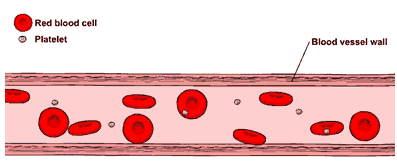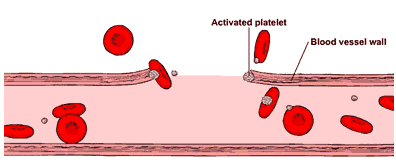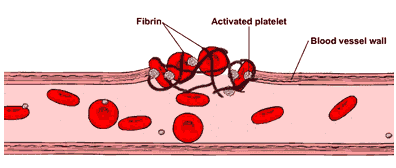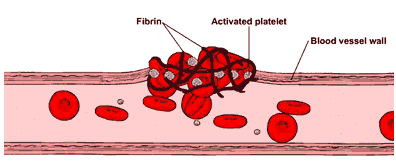


Blood Clotting
Clotting is the solidification of blood and is a process also known as coagulation. Blood clotting occurs when the blood vessels are severed/damaged. Blood exposed to the air will clot and seals the wound to prevent excessive blood loss while also preventing other invasive particles from entering the bloodstream.
The enzyme thrombokinase is secreted by the damaged tissues and blood platelets to convert a soluble protein in the bloodstream, prothrombin, into thrombin. Thrombin increases the rate of chemical reaction to form a network of insoluble fibrin, over the wound. Vital minerals, calcium ions and vitamins (i.e. vitamin K) are also essential for the process.
Blood possesses a substance that prevents the clotting of blood which is produced by the liver, called heparin. When thrombokinase is released, it neutralises the action of heparin so that clotting can effectively take place and clot within the bloodstream.
Foreign invasive particles such as bacteria that might have entered the bloodstream are then attacked by the white blood cells in the bloodstream. Antibodies will be secreted to cause them to clump together before finally being engulfed and ingested by the white blood cells.
Plasma contains plasminogen that binds the fibrin molecules in the clot. When the wound has healed, the normal cells would secrete tissues to attach themselves to the clot and therefore converting the plasminogen to plasmin. Plasmin will digest the fibrin and dissolve the clot when the wound has covered up and healed.







